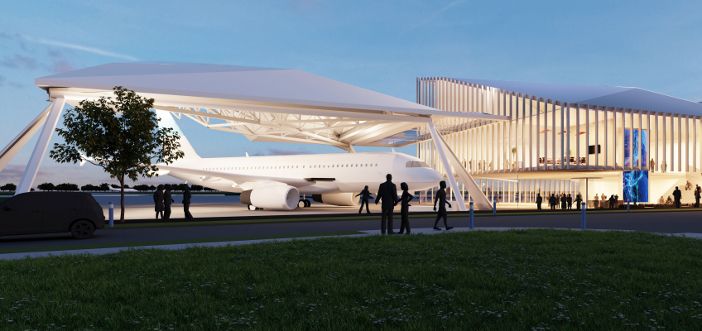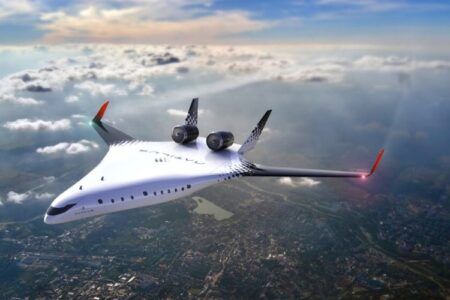The construction of DARTeC, a £67m (US$89m) research facility for “digital aviation” that will develop ways for aircraft to monitor, test and upgrade their own systems and structures, is expected to start in October at Cranfield University, UK.
The Digital Aviation Research and Technology Centre (DARTeC) is the single biggest investment made at Cranfield since the University was opened in 1946. The DARTeC building is expected to be completed next year and to open in 2020.
As part of the investment in equipment and facilities being made for DARTeC, the university will upgrade its Jetstream test aircraft to a “Saab 340-sized” airplane, said Professor Graham Braithwaite, project lead and director of transport systems at Cranfield University.
A major focus for research will be the development of what Braithwaite calls the “conscious aircraft” – technology that will enable an aircraft to monitor its own health and predict the useful life of components and systems, while automatically adapting to optimize their remaining life. This will require digital systems that operate at higher speeds than current aircraft condition monitoring systems are capable of.
“Some of the technology for this already exists, we want to take it to the next stage and integrate it into an aircraft. Part of that could be being able to understand the rate a component is wearing at – an aircraft could monitor that and order its own parts,” said Braithwaite.
“Or we could reach a level of autonomy where an aircraft is able to automatically perform software upgrades on its own avionics systems while en route, when it is safe to do so.”
Other features of the DARTeC facility will be the first remote air traffic tower in the UK, which could be built as soon as October, and radar technologies that will enable the testing of autonomous drones in an “airspace corridor” with manned aircraft.
“A major part of our research will be how drones integrate into wider aviation systems and their societal impact,” said Braithwaite.





